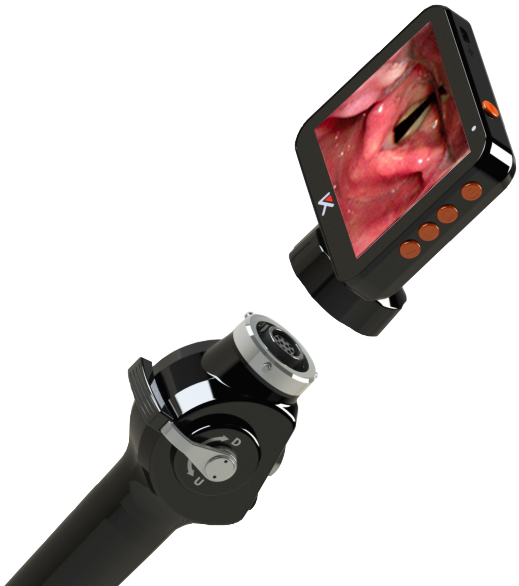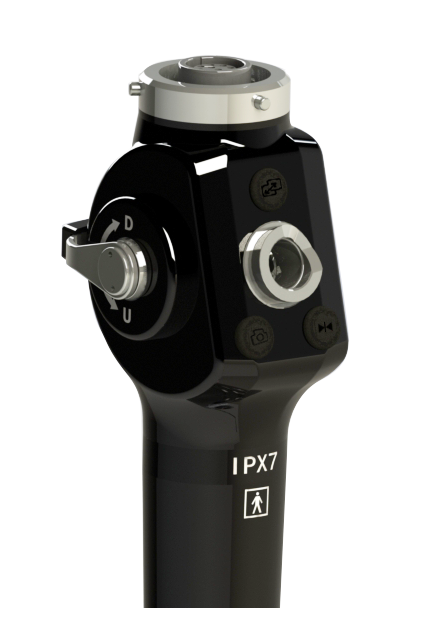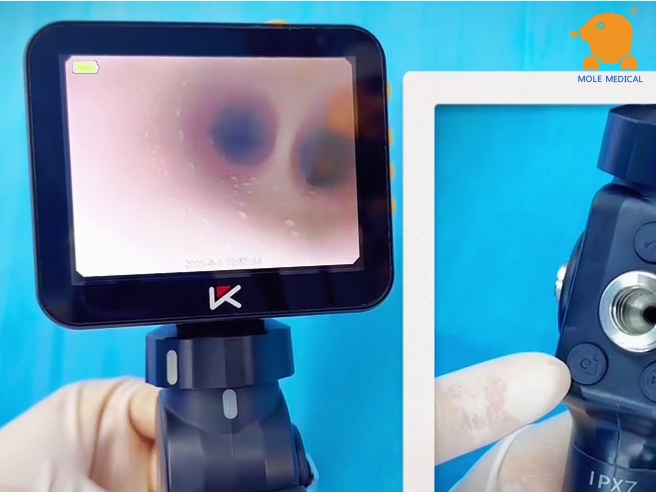White Balance Video Laryngoscope: Improving Visualization for Accurate Intubation
Dec 21, 2023
White balance video laryngoscopy is a modern medical procedure that allows physicians to visualize the larynx and vocal cords in high definition. This technique uses a video laryngoscope, which is a device equipped with a camera and a light source that is inserted into the patient’s mouth. The camera captures images of the larynx and vocal cords, which are displayed on a monitor in real-time.
The white balance of the video laryngoscope is critical to achieving accurate and realistic color reproduction of the larynx and vocal cords. The white balance refers to the process of adjusting the video laryngoscope’s camera to ensure that all colors appear accurate and natural. This process is essential because it helps physicians identify abnormalities or injuries in the larynx and vocal cords that may not be visible with the naked eye.
Key Takeaways
- White balance video laryngoscopy is a modern medical procedure that allows physicians to visualize the larynx and vocal cords in high definition.
- White balance calibration is essential to achieving accurate and realistic color reproduction of the larynx and vocal cords.
- White balance video laryngoscopy has various clinical applications and benefits, including improved patient outcomes and reduced complications.
Fundamentals of White Balance in Video Laryngoscopy

White balance is an essential aspect of video laryngoscopy that ensures accurate color representation and image quality. It is the process of adjusting the camera’s color sensitivity to match the color temperature of the light source used during the procedure.
In video laryngoscopy, white balance is critical because it affects the interpretation of tissue color and the visibility of anatomical structures. If the white balance is incorrect, the image may appear too yellow or blue, which can make it difficult to distinguish between tissues and structures.
To adjust the white balance, the camera in the video laryngoscope is equipped with a white balance function. This function allows the camera to measure the color temperature of the light source and adjust the camera’s color sensitivity accordingly.
There are two types of white balance: automatic and manual. Automatic white balance is the default setting in most video laryngoscopes, and it adjusts the color sensitivity automatically based on the light source’s color temperature. Manual white balance, on the other hand, allows the user to adjust the color sensitivity manually to achieve the desired color temperature.
In summary, white balance is an essential aspect of video laryngoscopy that ensures accurate color representation and image quality. It is the process of adjusting the camera’s color sensitivity to match the color temperature of the light source used during the procedure. Video laryngoscopes are equipped with a white balance function that allows for automatic or manual adjustment of the color sensitivity.
Types of Video Laryngoscopes

Video laryngoscopes come in different types, each with its own unique features and benefits. Here are two of the most common types:
Standard Video Laryngoscopes
Standard video laryngoscopes are rigid devices that allow indirect laryngoscopy, or visualization of the vocal cords and related airway structures without a direct line of sight. They consist of a handle, a blade, and a camera that captures the image of the airway. The image is then displayed on a monitor, allowing the clinician to view the airway without looking directly into the patient’s mouth.
One of the key benefits of standard video laryngoscopes is that they offer a clear, magnified view of the airway, making it easier to identify anatomical landmarks and place the endotracheal tube. They are also useful in patients with limited neck mobility or who are obese, as they provide a better view of the airway than direct laryngoscopy.
Flexible Video Laryngoscopes
Flexible video laryngoscopes are similar to standard video laryngoscopes, but they have a flexible blade that can be maneuvered to provide a better view of the airway. They are particularly useful in patients with difficult airways or who require awake intubation, as they allow the clinician to visualize the airway without causing discomfort or injury to the patient.
One of the key benefits of flexible video laryngoscopes is that they are less invasive than standard video laryngoscopes, as they do not require the use of a rigid blade. They are also useful in patients with limited neck mobility or who are obese, as they provide a better view of the airway than direct laryngoscopy.
Overall, both standard and flexible video laryngoscopes have their own unique features and benefits, and the choice of which type to use will depend on the patient’s individual needs and the clinician’s preference and experience.
White Balance Calibration Process

White balance is an essential process used in video laryngoscopes to ensure that the colors in the image are accurate and consistent. The white balance calibration process is necessary to adjust the camera’s color temperature to match the ambient light conditions. This section will discuss the two types of white balance calibration processes, automatic and manual.
Automatic White Balance
Most video laryngoscopes come with an automatic white balance feature that calibrates the camera’s color temperature to the surrounding light conditions. The process works by analyzing the light source’s color temperature and adjusting the camera’s settings accordingly. This feature is ideal for situations where the ambient light conditions are consistent, such as in a well-lit operating room.
Manual White Balance Adjustment
In situations where the ambient light conditions are inconsistent, manual white balance adjustment may be necessary. The process involves using a white balance card or a white sheet of paper to set the camera’s color temperature manually. The user will hold the white balance card or paper in front of the camera and press the white balance button. The camera will then calibrate the color temperature based on the white balance card’s color.
It is essential to note that the white balance calibration process should be performed before each use to ensure accurate and consistent color representation. Failure to calibrate the camera’s white balance can result in inaccurate and inconsistent colors, making it challenging to identify critical anatomical structures during intubation.
In conclusion, the white balance calibration process is an essential aspect of video laryngoscope use. The automatic and manual white balance adjustment features ensure accurate and consistent color representation, making it easier to identify critical anatomical structures during intubation.
Clinical Applications and Benefits

Enhanced Visualization for Intubation
The White Balance Video Laryngoscope has been shown to provide enhanced visualization of the airway during intubation, making it easier for clinicians to achieve successful intubation on the first attempt. This is particularly important in emergency situations where time is of the essence and a failed intubation can have serious consequences for the patient. The device’s high-resolution camera captures clear images of the vocal cords and surrounding structures, allowing clinicians to quickly and accurately place the endotracheal tube.
Improved Patient Outcomes
Studies have shown that the use of video laryngoscopes like the White Balance can lead to improved patient outcomes. For example, a study published in the journal Anesthesia & Analgesia found that video laryngoscopy provides better tracheal intubation rates, better laryngeal views, decreased incidents of failed intubations, decreased rates of airway trauma and hoarseness, successful rescue after failure with conventional laryngoscopy, and reduced time to intubation [1]. Another study published in the journal Critical Care found that the use of video laryngoscopy in the ICU was associated with a higher success rate of first-attempt intubation and a lower incidence of hypoxemia [2].
In addition to these benefits, the White Balance Video Laryngoscope also offers a number of practical advantages over traditional laryngoscopes. For example, the device is lightweight and easy to handle, making it ideal for use in a variety of settings. It also features a rechargeable battery, which eliminates the need for disposable batteries and reduces waste. Finally, the device is compatible with a wide range of endotracheal tubes, making it a versatile tool for clinicians.
Overall, the White Balance Video Laryngoscope offers a number of clinical applications and benefits that make it an essential tool for clinicians who perform intubations. By providing enhanced visualization of the airway and improving patient outcomes, this device can help clinicians provide better care to their patients and achieve better clinical outcomes.
Troubleshooting Common Issues
Incorrect Color Representation
One common issue that users of the White Balance Video Laryngoscope may encounter is incorrect color representation. This can be caused by a number of factors, including incorrect white balance settings, poor lighting conditions, or issues with the camera or monitor.
To troubleshoot this issue, users should first check the white balance settings on the laryngoscope and ensure that they are correctly calibrated for the lighting conditions in the room. If the white balance settings are correct, users should then check the lighting conditions in the room and adjust them as necessary to ensure that the laryngoscope is receiving adequate light.
If neither of these steps resolves the issue, users may need to check the camera and monitor settings and ensure that they are correctly calibrated. If the issue persists, it may be necessary to contact the manufacturer for further assistance.
Lighting Challenges in Laryngoscopy
Another common issue that users of the White Balance Video Laryngoscope may encounter is lighting challenges during laryngoscopy. This can be caused by a number of factors, including poor lighting conditions, reflections or glare on the laryngoscope, or issues with the camera or monitor.
To troubleshoot this issue, users should first check the lighting conditions in the room and adjust them as necessary to ensure that the laryngoscope is receiving adequate light. Users should also check for reflections or glare on the laryngoscope and adjust their positioning or use a different angle to reduce these issues.
If neither of these steps resolves the issue, users may need to check the camera and monitor settings and ensure that they are correctly calibrated. If the issue persists, it may be necessary to contact the manufacturer for further assistance.
Frequently Asked Questions
How does white balance affect the image quality in video laryngoscopy?
White balance is a crucial aspect of video laryngoscopy as it impacts the color accuracy and overall image quality. In simple terms, white balance is the process of adjusting the camera’s settings to ensure that white objects appear white, rather than yellow or blue. When the white balance is not set correctly, the image may appear too warm or cool, making it difficult to see the airway structures. Therefore, proper white balance is essential to ensure accurate visualization of the airway.
What steps are involved in setting the white balance on a video laryngoscope?
Setting the white balance on a video laryngoscope involves a few simple steps. First, the clinician needs to identify a white object in the field of view, such as a piece of paper or a white wall. Once the white object is identified, the clinician needs to press the white balance button on the video laryngoscope, and the camera will adjust the settings automatically. It is essential to ensure that the white object used for setting the white balance is under the same lighting conditions as the patient’s airway.
Can incorrect white balance impact the success rate of intubations with a video laryngoscope?
Yes, incorrect white balance can impact the success rate of intubations with a video laryngoscope. If the white balance is not set correctly, the image may appear too warm or cool, making it difficult to see the airway structures accurately. This can lead to intubation failures, increased intubation attempts, and prolonged intubation times. Therefore, it is essential to ensure that the white balance is set correctly before intubation with a video laryngoscope.
How do different lighting conditions affect the white balance on video laryngoscopes?
Different lighting conditions can impact the white balance on video laryngoscopes. For example, fluorescent lighting can cause a greenish tint, while incandescent lighting can cause a yellowish tint. Therefore, it is essential to ensure that the white balance is set correctly under the same lighting conditions as the patient’s airway. If the lighting conditions change, the white balance needs to be adjusted accordingly.
What are the best practices for maintaining white balance on reusable video laryngoscope blades?
To maintain the white balance on reusable video laryngoscope blades, it is essential to clean them thoroughly after each use. Any debris or stains on the blade can impact the white balance and image quality. Additionally, it is essential to ensure that the blade is dry before using it again, as moisture can impact the white balance. Finally, it is recommended to check the white balance before each use to ensure accurate visualization of the airway.
Categories
Latest Articles

Mole Medical: The Application Value of Electronic Bronchoscopy Alveolar Lavage in Children with Severe Pneumonia and Mycoplasma Pneumonia
Bronchoscopic lung lavage has become an important treatment method for severe pneumonia caused by mycoplasma in children. This technique mainly involves using a flexible electronic bronchoscope to enter the child’s airway and, under direct vision, remove the obstructive mucus plugs and inflammatory secretions. At the same time, lavage fluid is collected for pathogen detection. Compared ... Read more

Join Us at MEDLAB ASIA & ASIA HEALTH 2025!
Date: July 16–18, 2025Venue: Malaysia International Trade & Exhibition Centre (MITEC)Booth: H32 – Don’t miss it!Like & Follow us for updates!See you at Booth H32!

Clinical comparison of foreign body removal procedures using rigid bronchoscopy, fiberoptic bronchoscopy, and flexible electronic bronchoscopy
Bronchial foreign bodies are a common emergency in pediatrics. Clinically, bronchoscopy techniques are typically used to remove the foreign bodies. Currently, the three main bronchoscopy techniques each have their own characteristics, and among them, the flexible bronchoscopy shows unique clinical value in pediatric patients. This article conducts a clinical application analysis of all three bronchoscopy ... Read more

How Fibre Optic Laryngoscopes Improve ENT Procedures
In modern ENT procedures, precision and visibility are key. That’s where the laryngoscope fibre optic technology comes in. Unlike traditional tools, these advanced devices use fibre optics to provide a clear, well-lit view of the throat and vocal cords. This means doctors can see more and do more—with less risk to the patient. But how ... Read more

Flexible Laryngoscopy: A Clearer Voice for Quicker Diagnoses
Flexible Laryngoscopy is a powerful tool that helps ENT specialists do just that. It uses a thin, flexible scope to view the throat, vocal cords, and airway in real-time. The procedure is quick, non-surgical, and performed right in the clinic. For patients with voice changes, chronic cough, or throat discomfort, this method offers fast answers ... Read more



